Biking tour Dunkirk
Description
Dunkirk has the taste of the picturesque. As a resonance between eras, your stroll from the heart of town takes you to the 3rd port of France, you walk along the beach of Malo les Bains, leads you into the valley of roses and takes you into the meanders of the good times. The centuries have seen architectural panoramas overflowing with imagination and character. All the charm of Nordic cities.
In a trio of town, harbor, beach, Dunkirk has seen its turbulent history rub shoulders with opulence, the throes of war, the madness of style and urban reconquest of the most creative.
All along your walk, watch the facades, their decorative games. Keep an eye on the details, the least skylights. Contemplate the gables, the apparatus of the bricks and the numerous turrets. Admire the beauty of the ironwork and the wealth of the most improbable pageantry.
On the way to a show of curiosities!
Technical informations
16 km
|
max. 9 m
25 m
| ||||||||||||
Style : In town Public : Family Theme : Patrimony | |||||||||||||
Altimetric profile
Starting point
Points of interest
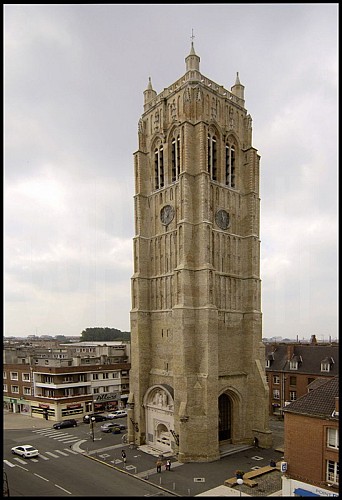
Saint Eloi belfry and church
Erected around 1440, the belfry was the bell tower of the Church of St. Eloi until a fire separated the two buildings in 1558. At the top of its 58 meters, it dominates the city. Your journey back in time begins with a climb in an elevator and continues with about sixty steps to the panoramic terrace. A powerful chime of 50 bells shines in your way traditional tunes every quarter of an hour. An orientation table allows to understand how Dunkerque is organized at the same time city, port and beach. To your photos! One of the most beautiful buildings in the city, its construction in a flamboyant Gothic began in the sixteenth century after the fire of a first building. Its neo-Gothic facade dates back to 1894. Many bullet impacts have been visible since the last wars. The choir of the church houses the tomb of Jean Bart.

Jean Bart statue
In the original center of Dunkirk, a former royal square designed by Vauban, in 1845 was erected the statue of the sculptor David d'Angers representing Jean Bart, the famous pirate dunkerquois ennobled by Louis XIV.

Marine Gate
Gateway to the arsenal of the navy due to Vauban, the door opens on the Marine Park, pleasant "green bubble" in the realm of shopping. Designed as a public walk, it is planted with granite columns by American sculptor Richard Jonas.
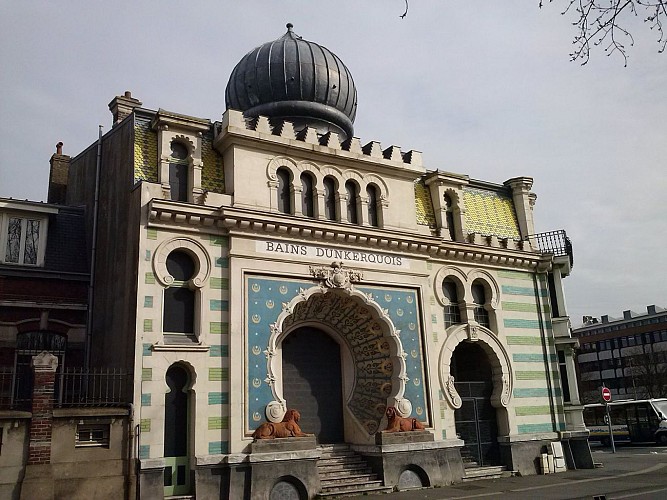
Dunkirk baths
A unique witness to the orientalist architecture of the end of the 19th century, the construction of public baths in Dunkirk was initiated in the 1890s. The establishment alone fulfilled three functions: those of bath-showers, swimming pool and public washhouse. . Facade inscribed on the supplementary inventory of historical monuments.
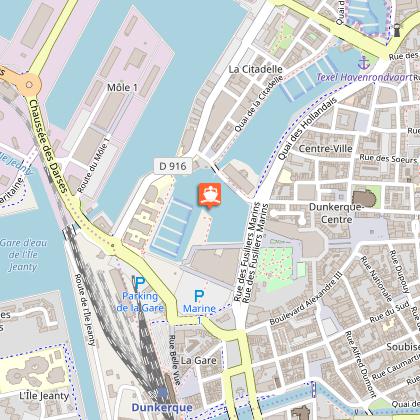
Princess Elizabeth
Steamer of English origin dating from 1926, it is wheel and paddle. Today fully restored, he became famous during the Second World War during Operation Dynamo. He is a member of the association of "Little chips".

Sugar market
In the walls of a former port warehouse of the nineteenth century, the "Hall of Sugar" is a place of production and dissemination of knowledge leveraging networks and digital technologies around a Learnong Center "Sustainable City".

Harbor museum
The former 19th century tobacco warehouse houses the museum's collections. Visitors can get to know the port world, both in its historical and contemporary dimensions. From privateers to fishermen in Iceland, from dockers to pilots, from schooner to container ship: a history, and stories to discover to know the port. The visit of the museum afloat represents a unique opportunity to immerse oneself in the life of sailors, boarding the three-master Duchesse Anne or Sandettie fire-boat, both classified historical monuments, or immersing themselves in the daily boatmen aboard the houseboat Guilde.

Sailboat 3 masts
Classified as a historic monument, former Grossherzogin Elisabeth is the tallest sailboat and the last three square masts kept in France. Built in 1901, it is a former Merchant Marine training ship. In 1946, he was handed over to the French Navy for war damage. In 1981, the city of Dunkirk bought it for 1 symbolic franc. It is part of the floating heritage of the Port Museum.
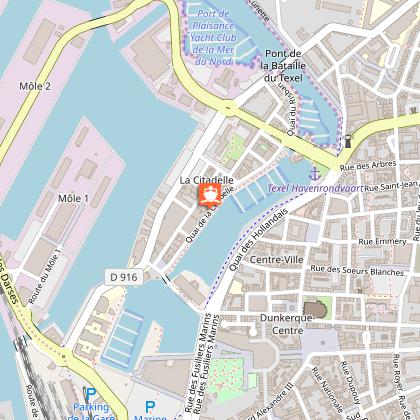
Lightship
Recognizable by its red color and built in 1947, it is the last French vessel of this type to have been put into service. He protected the ships from the presence of sandbanks. It is registered in the inventory of Historic Monuments.
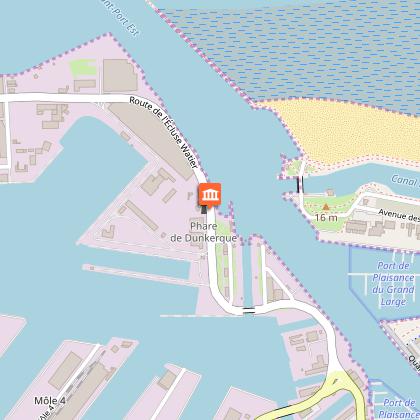
Risban lighthouse
Built on the ruins of a fort designed by Vauban, the Dunkirk lighthouse was commissioned in 1843. It is the only lighthouse in the Nord department. It has the shape of a cylindrical tower of 63 meters high. A staircase of 276 steps leads to its lantern. Its fire has a range of 26 miles (about 48 km).

Leughenaer tower
The Leughenaer tower is the oldest monument in the city. Dominating the Minck Square and its fish market, the tower also called Tour of the liar is the last of the twenty-eight of the XVth century enclosure. Legend has it that it deceived the enemy ships instead of driving them safely to the port, causing them to run aground on the many sandbanks and be looted.

Belfry of the Town Hall
In Flemish Renaissance style (1901), the Town Hall was built of stones and red bricks. Its astonishing belfry rises to 75 meters high. On the main facade stands an equestrian statue of Louis XIV who bought the city from the English in 1662. The belfry is not open to visitors, but you can admire in the main hall the magnificent stained glass window made by Félix Gaudin, commemorating the triumphant return of Jean Bart after his Texel victory. During the carnival of Dunkirk, it is from the balconies of the Town Hall that the mayor and officials throw some 500 kg of smoked herring to thousands of carnivals.

Chapel "Notre Dame des dunes"
In 1403, while the ramparts are under construction, a small statue of the miraculous Virgin is discovered near a source of fresh water. The chapel Notre-Dame was built at this place. Inside, Italian decor, many exvoto and models of suspended boats. Every year on August 15 - procession of the Virgin during the blessing of the sea.

victory column
Erected in 1893 to commemorate the centenary of the lifting of the siege of Dunkirk in 1793 during the Battle of Hondschotte.
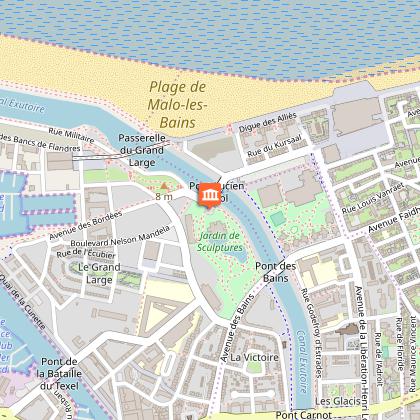
LAAC
At the heart of a sculpture garden, the LAAC defies the sky with its astonishing architecture in white ceramic. He keeps a very rich collection of art from the years 1950-1980: Karel Appel, Arman, Cesar, Eugene Leroy, Alfred Manessier, Peter Soulages, Andy Warhol, Peter Klasen ...
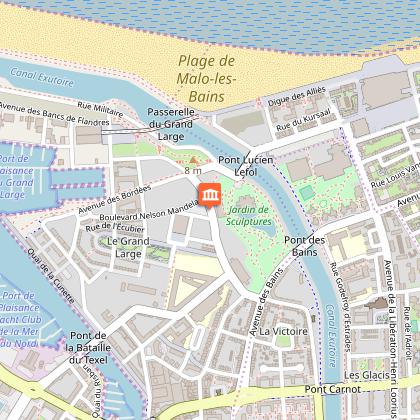
Dunkirk 1940 Dynamo operation museum
The Memorial of Remembrance evokes the Battle of Dunkirk and Operation DYNAMO from May-June 1940, a vast embarkation operation to England (350,000 Allied soldiers). An important collection of photographs, maps and military equipment of the time allows to understand this crucial episode of the Second World War.
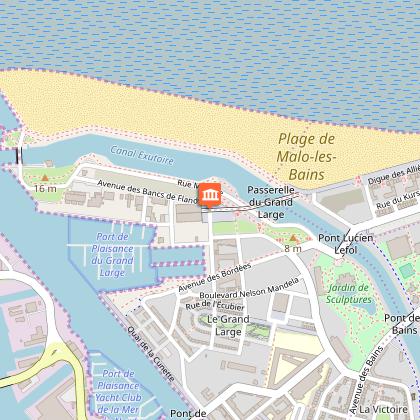
FRAC : regional fund of contemporary art
Established in Dunkerque since 1996, the FRAC Nord-Pas-de-Calais has a rich and representative collection of contemporary art of the last 30 years of nearly 1500 works. Designed by architects Lacaton & Vassal as an "open house", the new FRAC Nord-Pas-de-Calais building has 6 levels of exhibition, work and meeting spaces where everyone will be invited to live an experience with contemporary art. By building a translucent binoculars at the historic Pre-fabrication Workshop No. 2 (AP2), the last remnant of the shipyards Naval de France, the architects gave the FRAC a unique place.

memorial of allies
Located at the end of the dike of the allies, the memorial was made with cobblestones from a dock of the port. it commemorates the courage of the Allied troops who participated in Operation Dynamo from May-June 1940.
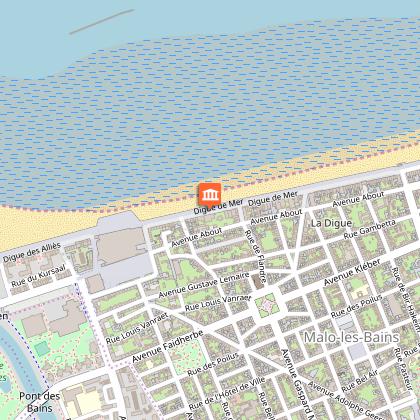
Falklands villas
On the seafront and in the heart of the seaside resort, sumptuous bourgeois houses were built at the end of the 19th century and at the beginning of the 20th century. The queen of the northern beaches was then attended by a distinguished society that in the architecture of their homes expressed all styles, art deco, art nouveau, neo-Gothic, Swiss chalets, Corinthian palaces, Chinese pagodas, thatched cottages or even oriental villas. Remarks the names of villas, often evocative of the intimacy of the owners. The architects have multiplied the points of view: cubicle, large skylight, pinion of the floor of roof and roof terrace. The architect recalls travel. Late nineteenth, early twentieth, the dike-promenade was built to allow ladies to show their dresses.

City Hall of Rosendael
Work of the local architect André Neuville. Its belfry is inspired by the belfry of Bergues, the latter having been dynamited by the Germans during the Second World War.

Excentric district
Unusual and remarkable district of 35 houses, fruit of the overflowing imagination of François Reynaert, built in the 1930s.

Myosotis villa
Listed in the additional inventory of historical monuments, Villa Myosotis is saved from the demolition in the 1980s. Built around 1894 by the entrepreneur Emile Dubuisson, wood merchant, this mansion was designed by the architect Jules Gontier. Entirely made of softwood imported from Norway or Russia, this two-storey house stands out for its originality and elegance. Award of honor at the Paris architectural competition in 1900, it is surrounded by a wooded park and a rose garden.
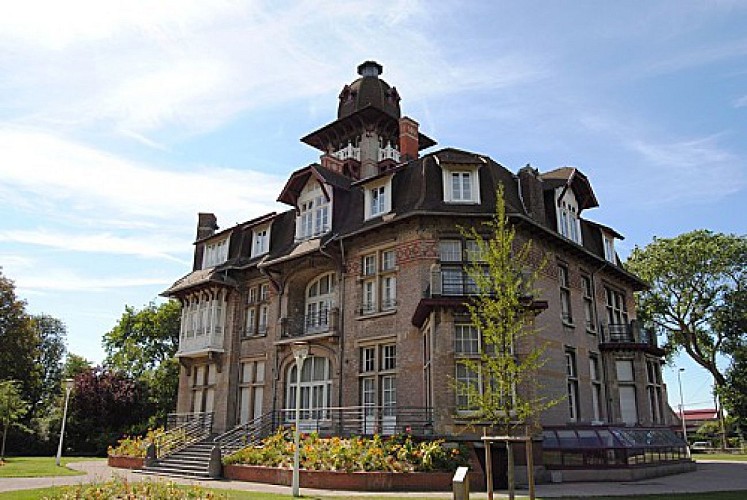
Coquelle castle
Félix Coquelle, mayor of Rosendaël from 1904 to 1928, built his house of 25 pieces of Basco-Byzantine style in an English-style park. The construction of the building will be done between 1902 and 1907 on the plans of the architect Jean Morel, the sculptor Maurice Ringot having realized the interior decoration.
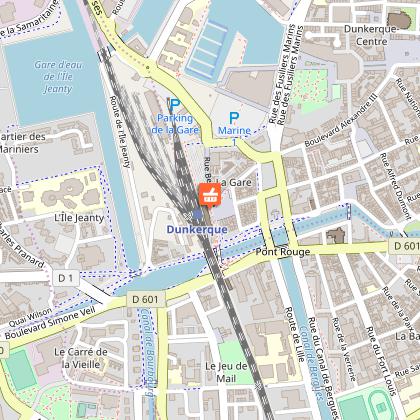
SNCF Train station
Monday - Tuesday - Wednesday - Thursday - Friday from 04:50 to 21:15 Saturday from 05:20 to 21:15 Sunday and public holidays from 08:15 to 21:30
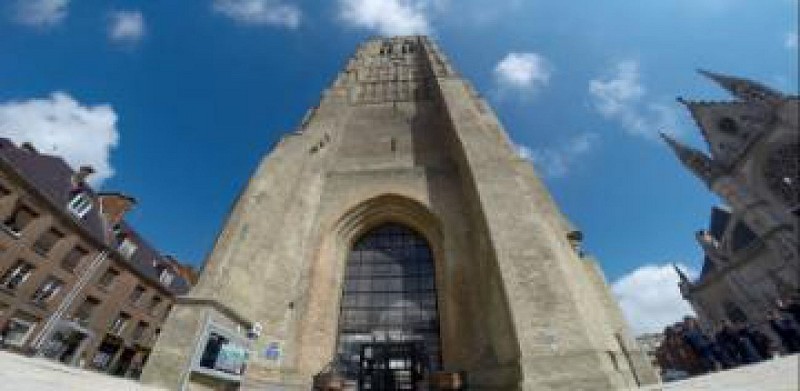
Office de tourisme Dunkerque
Tél : 33 (0)3 28 66 79 21 E-mail : accueil.dunesdeflandre@ot-dunkerque.fr Du lundi au vendredi 10h - 12h30 , 14h - 18h30 / Samedi 10h - 18h30 Juillet, août du lundi au samedi 10h - 18h30 Dimanches et jours fériés en saison 10h - 12h / 14h - 16h Accessibilité / Le stationnement réservé aux personnes handicapées est situé devant le 5 rue Clémenceau 59140 Dunkerque / Toilettes : à proximité du 22 rue des soeurs blanches 59140 Dunkerque
Data author

The Cirkwi brief
Embark on an exceptional journey through the streets of Dunkerque, designed by Xavier Lesaege, and experience the city from a different perspective. Delve into a vibrant mix of history, architecture, and scenic beauty as you pedal through this northern gem. The route, starting from the heart of Dunkerque, leads adventurers to the city's historic port and the serene Malo les Bains Beach, traversing through the enchanting Valley of Roses. Amidst the echoes of time, witness the architectural splendor and the imaginative spirit that has evolved over centuries, promising a cycling itinerary filled with awe and wonders.
Detailed Route Briefing
The cycling path stretches for approximately 15.9 km, with an altitude variating between -2 to 9 meters above sea level, culminating in a gentle elevation change of nearly 1 meter. This route incorporates a mix of urban and coastal landscapes, demanding a moderate level of fitness. Analyzing the specifics, the ride presents an opportunity to explore Dunkerque effortlessly, adjusting to both elevation and distance efficiently. Designed with precision, it encapsulates a seamless journey through the city's diverse topography.
Seasonal Tips for Travelers
Traveling through Dunkerque's splendid cycling route varies with the seasons. Spring and autumn are idyllic for their mild temperatures and fewer crowds, enhancing the enjoyment of architectural and scenic views. In summer, the coastal breeze offers a refreshing respite, though it's advisable to start early to avoid midday heat. Winter rides are brisk; warm, layered clothing and windproof gear are must-haves. Always check your bike, particularly the brakes and tires, before setting off to ensure a safe journey regardless of the season.
A Glimpse into Dunkerque's Rich Heritage
Dunkerque, nestled in the northern extremity of France, stands as a testament to resilience and architectural magnificence. With origins dating back to the 10th century, its strategic position on the coast has shaped its history profoundly, influencing its role in trade, military defense, and cultural exchanges. The city and the surrounding region have endured through periods of prosperity and conflict, each layer adding to its unique cultural tapestry. Dunkerque's story is a vibrant blend of historical opulence, wartime ravages, and creative urban rebirth, making it a fascinating subject for both enthusiasts and casual visitors alike.
Understanding Dunkerque’s Weather Patterns
The climate of Dunkerque is predominantly oceanic, characterized by mild temperatures and moderate precipitation throughout the year. The best time to visit, especially for cycling, is between May and September when the weather is generally warm and precipitation is lower. Wind is a constant in this region, adding an invigorating element to your ride. However, it's crucial to prepare for variable conditions; a sunny start can quickly turn into a rainy afternoon. Winter months are cooler and wetter, yet still offer unique charms for the resilient cyclist.